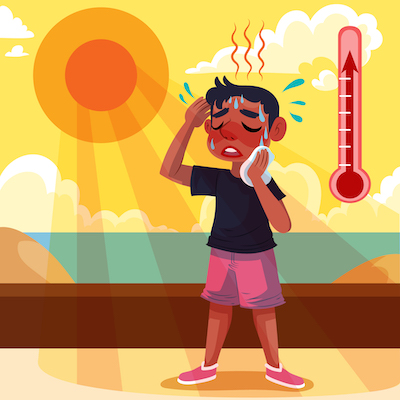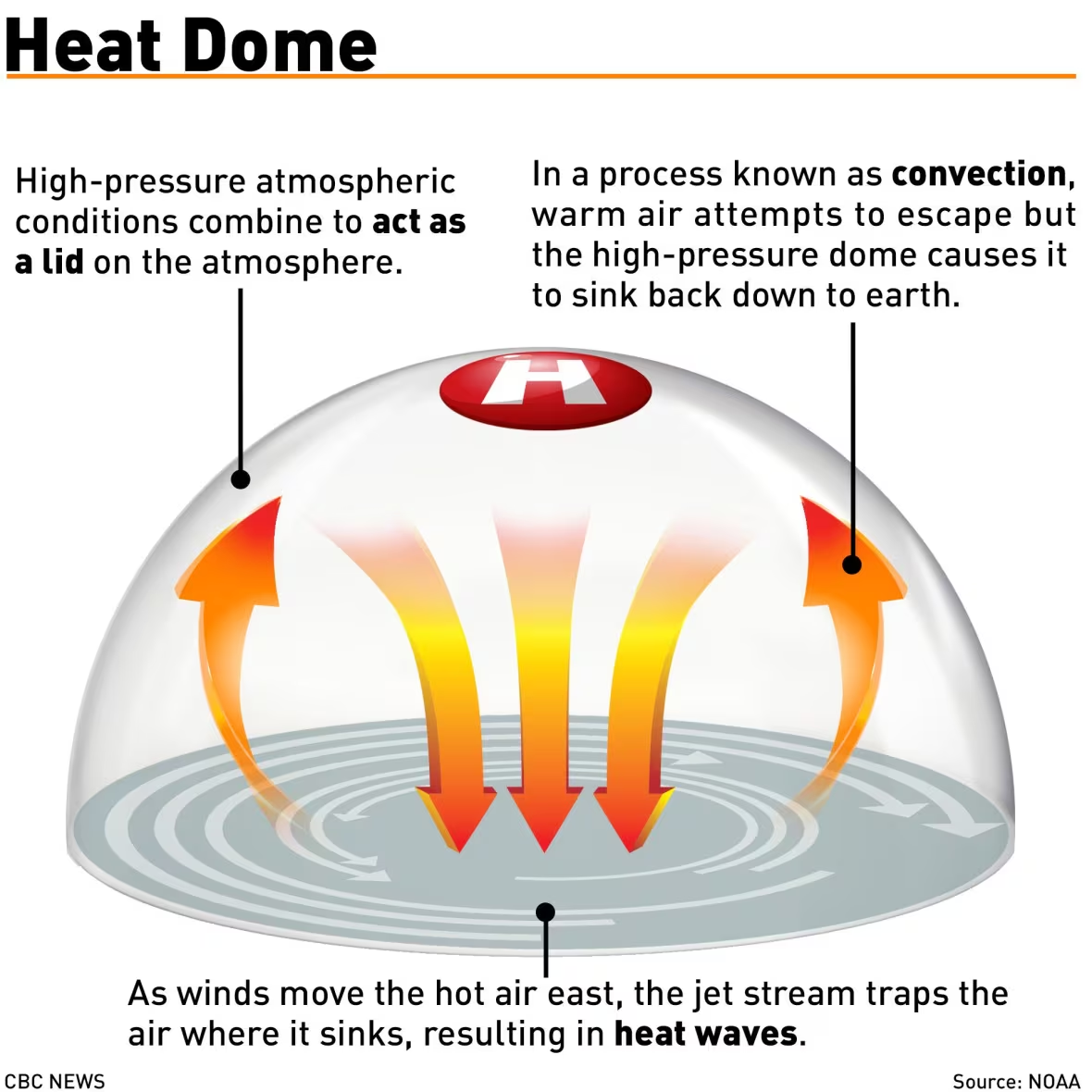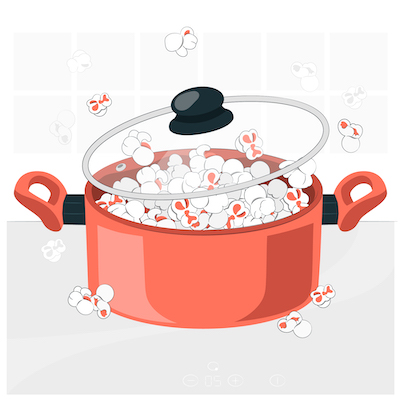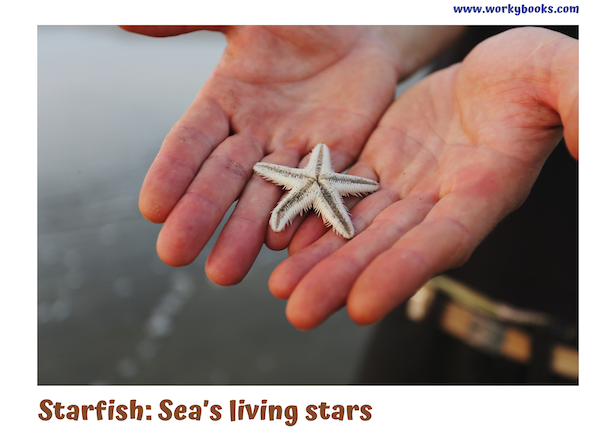Weather Quiz: Introduction to Heat Domes

Welcome to our exciting quizzes on heat domes! Today, we’re going to explore a fascinating weather phenomenon that can make summer days extra hot. This lesson is designed to help you understand what heat domes are, how they form, and how to stay safe during these extreme heat events.
Our lesson is divided into five main parts. Each part is accompanied with an independent quiz.
- What is a heat dome and how does it form?
- What are the main causes of a heat dome?
- What are the potential health impacts of a heat dome?
- How can individuals and communities prepare for and stay safe during a heat dome event?
- A special activity to help us learn new words related to heat domes
For each of the first four parts, we’ll read an informational text and then answer multiple-choice questions to check our understanding. This aligns with the Common Core Standard CCSS.ELA-LITERACY.RI.5.2, which asks students to determine two or more main ideas of a text and explain how they are supported by key details.
Our final activity focuses on using context clues to figure out the meaning of new words. This activity aligns with CCSS.ELA-LITERACY.L.5.4.a, which encourages students to use context as a clue to the meaning of a word or phrase.

What is a heat dome and how does it form?
A heat dome is a weather event where a big area gets really hot. Imagine putting a lid over a pot. The lid traps the heat inside. A heat dome is like a lid, trapping hot air in one place. It forms when high pressure in the atmosphere stays over the same area for days or weeks.
Heat domes form when the air high up in the sky moves in a special way. This movement creates an area of high pressure that acts like a lid. This high pressure pushes warm air down, making it even hotter. The heat can’t escape, so it gets hotter and hotter, just like in the pot.

As the sun keeps shining, the air under this “lid” gets hotter and hotter. It’s like being in a car with the windows closed on a sunny day – the heat just keeps building up! The hot air can’t escape or mix with cooler air, so the temperature keeps rising day after day. This can make the weather much hotter than usual for a long time.
Heat domes often happen in summer when the weather patterns don’t change much. They can cover a small area or spread over whole countries, making lots of people feel very hot!
Quiz with answers
Q1. What is a heat dome often compared to?
A) A blanket
B) A lid on a pot
C) A balloon
D) A cloud
Q2. What causes the air to get trapped in a heat dome?
A) Low pressure in the atmosphere
B) High pressure in the atmosphere
C) Strong winds
D) Heavy rainfall
Q3. How long can a heat dome last?
A) A few hours
B) One day
C) Several days or weeks
D) Only at night
Q4. When do heat domes often occur?
A) In winter
B) In spring
C) In summer
D) In fall
Answers
1.B) A lid on a pot
2.D) High pressure in the atmosphere
3.C) Several days or weeks
4.A) In summer
What are the main causes of a heat dome?
Heat domes are caused by special patterns in the way air moves high up in the sky. These patterns are part of our planet’s weather system.
The main cause of a heat dome is high pressure in the atmosphere. This is an area where the air pressure is higher than the areas around it. This high pressure acts like a cap, trapping hot air underneath.
High-pressure systems often bring clear skies and calm weather. The sun keeps shining through the clear skies, heating the ground and the air even more. With nowhere for the hot air to go, it just keeps getting hotter. In a heat dome, a very strong high-pressure system gets stuck in one place. It’s like a big, invisible mountain of air that doesn’t want to move.
Sometimes, changes in ocean temperatures can help create the conditions for a heat dome. When ocean water is warmer than usual, it can cause the air above it to heat up too. This warm air can then move over land, creating a heat dome. Climate change can make heat domes more common and intense.
Start Quiz here.
Q1. What is the main cause of a heat dome?
A) Low pressure in the atmosphere
B) High pressure in the atmosphere
C) Strong winds
D) Heavy rainfall
Q2. What kind of weather does a high-pressure system often bring?
A) Rainy and windy
B) Cloudy and cool
C) Stormy and wet
D) Clear and calm
Q3. How can ocean temperatures affect heat domes?
A) They have no effect
B) Colder oceans create more heat domes
C) Warmer oceans can contribute to heat dome formation
D) Only frozen oceans cause heat domes
Q4. What can make heat domes more common and intense?
A) Climate change
B) Increased rainfall
C) More trees
D) Colder winters
What are the potential health impacts of a heat dome?
Heat domes can be dangerous for our health. Our bodies work hard to stay at the right temperature, but too much heat can make this difficult.
One big problem is dehydration. When it’s very hot, we sweat a lot to cool down. People can get dehydrated, which means their bodies don’t have enough water. It’s important to drink lots of water and stay cool during a heat dome
Heat exhaustion is another risk. This happens when our body gets too hot and can’t cool down properly. It can make people feel dizzy, tired, and sick to their stomach.
In very serious cases, people can get heat stroke. This is when the body gets so hot it can’t control its temperature anymore. It’s very dangerous and people need to get help right away.
Some people are more likely to have problems in extreme heat:
- Older people and young children
- People who are sick or take certain medicines
- People who work or exercise outside
The heat can also make breathing harder for people with lung problems. And it can be extra tough for people who don’t have air conditioning or cool places to go.
How can individuals and communities prepare for and stay safe during a heat dome event?
Staying safe during a heat dome is all about keeping cool and taking care of ourselves and others. Here are some important things we can do:
- Drink lots of water, even if you don’t feel thirsty. Our bodies need extra water when it’s hot.
- Stay in cool places. If your home isn’t cool, try to go to air-conditioned places like libraries or shopping centers.
- Wear light, loose clothes that let your skin breathe.
- Take cool showers or baths to help your body cool down.
- Avoid being outside during the hottest part of the day, usually from about 11 am to 3 pm.
- If you do go outside, wear sunscreen and a hat, and try to stay in the shade.
- Never leave kids or pets in a parked car, even for a short time. Cars can get very hot very quickly.
- Check on family, friends, and neighbors, especially older people or those who live alone.
Communities can help by:
- Opening centers where people can go to cool off
- Giving out information about how to stay safe in the heat
- Making sure everyone has access to water and cool places
Remember, staying safe in extreme heat is important for everyone!

Vocabulary Words and Meanings:
1. Heat dome: A weather event where hot air is trapped over an area for days or weeks.
2. Atmosphere: The layer of gases surrounding the Earth.
3. Pressure: The force exerted by air in the atmosphere.
4. Dehydration: A condition where the body doesn’t have enough water.
5. Heat exhaustion: A condition caused by overheating of the body.
6. Heat stroke: A severe and dangerous condition when the body can’t control its temperature.
7. Climate change: Long-term changes in temperature and weather patterns.
8. Intensity: The strength or severity of something.
Contextual Clue Activity (CCSS.ELA-LITERACY.L.5.4.a):
Instructions: Read each sentence below. Use the context clues to figure out the meaning of the underlined word. Then, explain what clues helped you determine the meaning.
- During a heat dome, the atmosphere traps hot air like a lid on a pot, causing temperatures to rise dramatically. What does atmosphere mean? What clues helped you?
- The high pressure system acts like a cap, keeping the hot air from escaping. What does pressure mean in this context? What clues helped you?
- It’s important to drink plenty of water during a heat dome to avoid dehydration, which can make you feel sick and tired. What does dehydration mean? What clues helped you?
- Heat exhaustion can occur when your body gets too hot and can’t cool down properly, causing symptoms like dizziness and nausea. What is heat exhaustion? What clues helped you?
- Climate change is making heat domes more common and intense, leading to more frequent extreme heat events. What does intense mean in this sentence? What clues helped you?
This activity aligns with CCSS.ELA-LITERACY.L.5.4.a, which requires students to “Use context (e.g., cause/effect relationships and comparisons in text) as a clue to the meaning of a word or phrase.” By asking students to identify the meaning of words based on the surrounding text and explain their reasoning, this exercise helps them develop their skills in using context clues to understand new vocabulary.
click here for more contextual clues worksheets for Workybooks digital library.



